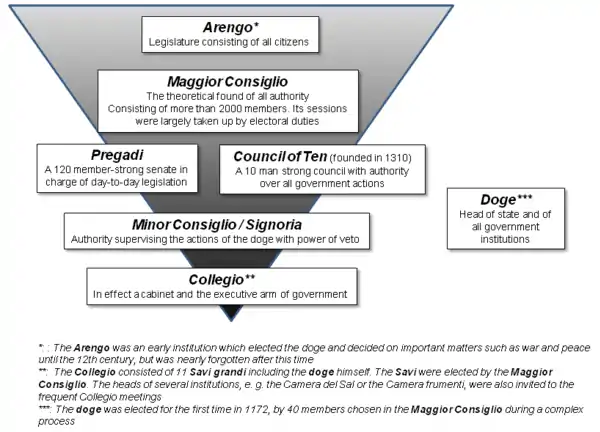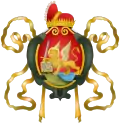Signoria of Venice
The Signoria of Venice (Serenissima Signoria) was the supreme body of government of the Republic of Venice. The older Commune of Venice, was replaced by the Signoria from 1423 on, being later officially adopted in the Promissione Ducale by Cristoforo Moro (12 May 1462). It constituted a center of power which included the doge's power.

The Signoria can be thought of as the combination of the Doge and the other persons commissioned to collaborate and to rule with him. With the passage of time these functionaries became copartners.

The members of the Signoria of Venice
The Signoria of Venice consisted of:
- the Doge, head of the Republic
- the Minor Council (Minor Consiglio), created in 1175, which was composed of the 6 advisors of the Doge.
- the 3 leaders of the Quarantia, the supreme tribunal, created in 1179.
The Doge (from Latin dux - leader) was the chief magistrate in the republics of Venice (until 1797) and Genoa (until 1805).
The Signoria was considered a very important body of government, more important than the Doge himself. The sentence se l'è morto el Doge, non-l'è morta la Signoria (The Doge is dead, but not the Signoria) was ritually said during the ceremonies set for the death of the Doge.[1]
References
- "Le origini di Venezia". cadeimiracoli.com. Archived from the original on 9 January 2008. Retrieved 9 February 2011.
The state of Venice was not wearing any mourning clothes at the death of the doge. It was said that "The Doge is dead, but the Signoria is living"
Bibliography
- Edward Wallace Muir Jr. (1986). Civic Ritual in Renaissance Venice. Princeton University Pres. p. 275. ISBN 0691102007.CS1 maint: uses authors parameter (link)

